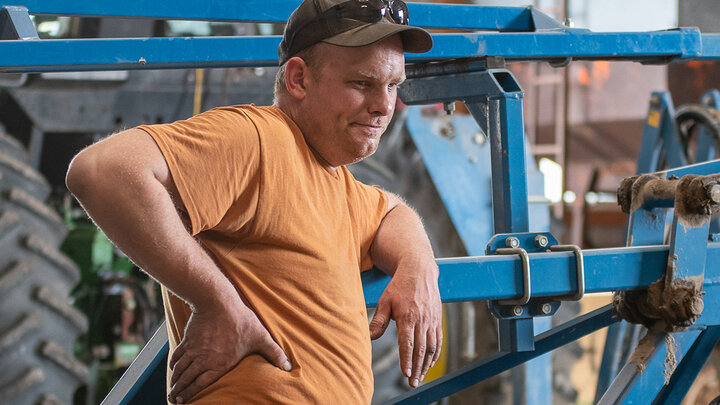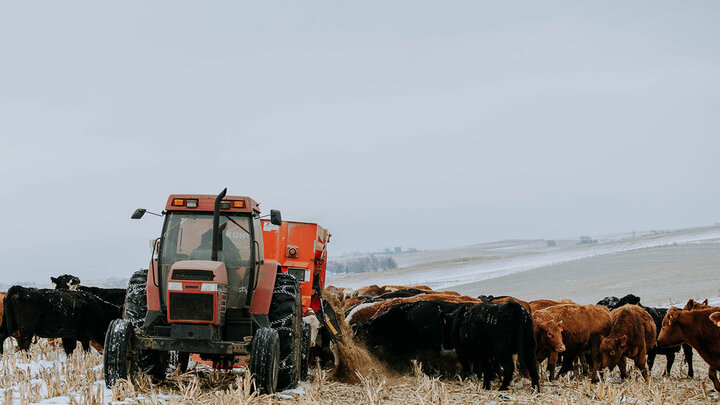This article was first published in September 2025 by RightRisk News.
At a Glance
- Agriculture demands constant, high-stakes decision-making that can lead to fatigue.
- Building stamina through clear objectives and teamwork supports long-term success.
- Sharing decisions with employees, partners, and advisors creates accountability and stronger results.
- Communication and structured processes can turn decision fatigue into a source of resilience and growth.
Should I sell my calves off the cow this fall? How much of my fertilizer, herbicide, and seed needs for 2026 should I price in for my crops before the end of the year? When is the best time to line up someone to help with the calving season in the spring? How much should I be willing to pay for them? Is the tractor I have been using for most of my cropping activities going to last another year or is now the time to replace it? What would I replace it with? What sort of tax considerations should I focus on?
So Many Decisions
In agriculture, the decisions never stop. This is true for most businesses. However, agriculture is one of the most intense businesses in the world when it comes to decision-making. Fraught with many uncertainties and outcomes that often tilt tens of thousands of dollars in the right or wrong direction, a decision-maker in agriculture must build stamina for the long haul to avoid making mistakes that derail progress over significant periods of time.
Stamina and strength are best built during times of good health. For a business owner, that means always being aware of the direction you want to take the business and diligently seeking opportunities to move it that way. Whether objectives are strategic, tactical, or operational, they are critical to fighting decision fatigue and keeping your farm or ranch business moving in the right direction.
Decision Fatigue Impact
Why is it important to fight decision fatigue? When people get tired of doing something, they tend to either avoid it or do a poor job of it. Decisions are no different. However, doing a poor job of making decisions is the fastest way to go out of business. Avoiding decisions is almost as bad, because procrastination leads to letting opportunities pass by that could have moved you toward your goals and can allow avoidable crises to develop.
The complexity of deciding in a crisis is well documented (Keeney, et al., 2025). Under pressure to act quickly, deciding in a crisis tends to lead to an overemphasis on short-term implications and favors decision alternatives that provide emotional relief. While this may be good for the short-term health of the decision-maker, it is less likely to lead to the best choice for the long-term health of the business.
Fighting Decision Fatigue
How do you fight or avoid decision fatigue? This is best addressed with a two-pronged approach. First, establish a strong decision-making culture based on sound decision-making processes that focus on accomplishing business objectives and goals. Second, use that decision-making culture to share the burden of decision-making with partners, colleagues, employees, and support professionals. These folks will not only provide the support you need to keep your farm or ranch business moving in the right direction but also provide motivation and accountability to fight decision fatigue.
Sound decision-making processes start with a clear identification of the decision opportunity. Additionally, relevant internal and external information helps establish the context of the decision, as does an understanding of the associated uncertainty. For the purpose of fighting decision fatigue, the most important aspect of understanding the context is being clear about why you want to make the decision. This important step leads to the identification of the objectives involved in the decision. A clear understanding of what you are trying to accomplish puts you well on the way toward establishing the decision-making stamina needed to be a successful farm or ranch manager. With additional experience, intuition builds, leading to quicker, more decisive decisions that instinctively take advantage of opportunities to move the farm or ranch in the right direction.
A sound decision-making process would not be complete without good alternatives to choose from and a good assessment of trade-offs among those alternatives before making a choice. A free flow of information that comes from good communication and consultation during the decision-making process is an invaluable aspect of building a healthy decision-making culture. It is also essential for creating a good set of alternatives and for understanding the trade-offs.
Communication is Key
Communication is key to engaging people inside and outside the farm or ranch business in the success of the business. As a farm or ranch manager, this provides accountability and support to drive you forward in making good decisions, fighting against the temptation to avoid the work of deciding or to delay decisions altogether. It is important for farm or ranch management to take ownership of decision-making for the good of the operation. However, this does not mean the entire burden has to fall on the manager’s shoulders. Establishing a strong decision-making culture with decision-making processes that promote communication throughout the organization while establishing clear objectives will help the decision-maker create a human support structure that shares the burden of decision-making.
For example, if a rancher is trying to decide whether to sell their calves off the cow this fall at weaning or to retain the calves for a period of time through some sort of retention program, there are plenty of people to talk to about it. Talk with employees, partners, and others directly involved in the business about resources to support the retention, current finances, production considerations, and market projections. Outside professionals can and should be consulted for additional support on all these aspects, too. For example, market projections can be gathered from a few market professionals, and a banker can be consulted about your current financial situation and any concern regarding the additional financial risk retention of the calves would involve. The responsibility of the decision still falls on the rancher—the process of gathering additional information brought with it additional human support that can potentially provide the motivation needed to move forward—but the process of gathering information also builds a human support system that provides motivation and accountability to move forward.
Not a Perfect Science
Decision-making in agriculture is not a perfect science. The difficult environment and continuous need to decide can lead to decision fatigue. However, tools are available to keep on track as a decision-maker and avoid mistakes brought on by fatigue. We have summarized some important considerations in this newsletter article. We encourage readers to follow up with more information available on the RightRisk website (RightRisk.org). This includes online course materials, several e-books, and a library of past newsletters, including the September 2022 newsletter on decision-making under uncertainty that provides additional perspectives on decision-making in agriculture.
Cited Resources
Ralph L. Keeney, Robin Gregory, Paul Slovic (2025) Proactively Planning for Possible Future Crises. Decision Analysis. Published online in Articles in Advance 04 Aug 2025. https://doi.org/10.1287/deca.2024.0293.
Decision-making Under Uncertainty. RightRisk News, Volume 10, Issue 9 (September 2022): https://www.uwagec.org/rightrisk/news/wp-content/uploads/2022/09/2022_09_RightRiskNews.pdf.




